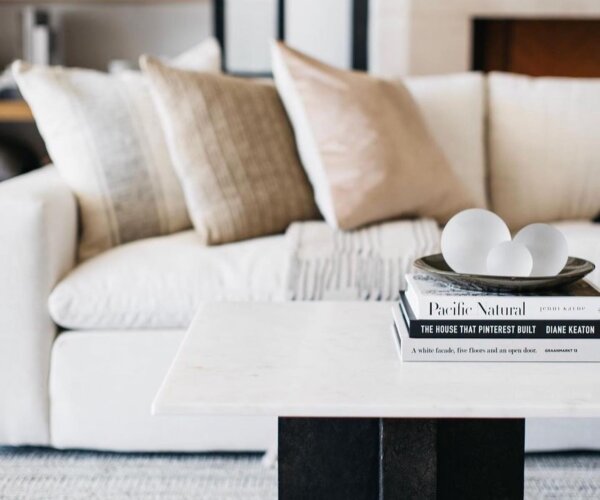
Custom cabinetry makes a big difference in a home, but the process of choosing and designing custom cabinets can be harder than it may seem. From picking the right type of natural wood to choosing your stain color, each decision in custom cabinetry is important.
Custom vs. Pre-Manufactured Cabinetry
With custom cabinets, you can have anything you ever dreamed of with a perfect fit for your house. Custom cabinets get down to 1/32″ for a custom fit. Pre-manufactured cabinets will only give you widths of 36″ to get the most yield out of each wood sheet. That means when you put pre-manufactured cabinets in, you have to add big fillers.
Also, with pre-manufactured cabinets, your selections, from door styles to colors, will be very limited all the way around.

Kitchen Cabinet Wood Choices
The 5 best and most popular woods for kitchen cabinets are pine, oak, hickory, cherry, and maple. Pine, oak, and hickory are cheaper and easier to get. Cherry and maple look luxurious and cost more than the others.
1. Pine
This is one of the cheapest and easiest hardwoods to get. Pine adds a nice rustic look to kitchens and it ages quite nicely. It does nick pretty easily, though.
2. Oak
Oak is the most common wood for kitchen cabinets. There are several reasons for this. Oak is easy to find, fairly cheap, durable, and it takes paints and stains well.
3. Hickory
Hickory is the most durable of the woods. You won’t see nicks, cracks, or moisture damage on cabinets made from this hardwood. Hickory also has a decently wide color range.
4. Cherry
Cherry cabinets are cool because the more sun it gets the darker the wood turns. This wood is durable and easy to work with but it is more expensive than most hardwoods.
5. Maple
This is one of the best woods for kitchen cabinets. The wood grains show up beautifully through paints and stains. Along with this beauty comes durability and a higher price tag.
Cabinet Styles
The cabinet design sets the tone and style for your entire kitchen. We will break it into three sections:
- Cabinet Construction- The cabinet construction type refers to just the cabinet box, not the cabinet doors. There are two types of cabinet construction: framed and frameless.Frame Cabinets have a frame that attaches to the front of the cabinet. The face-frame gives the cabinet box extra strength. Framed cabinets are usually found in traditional designs. Frameless Cabinets do not have a face-frame. Frameless cabinets offer increased space for storage. They lend themselves well to contemporary and modern designs as they look more sleek.

- Cabinet Type- There are three types of cabinets: partial overlay, full overlay, and inset. Each term is used to describe how the cabinet door or drawer sits on or in the cabinet frame.

- Partial Overlay- In Partial Overlay, the door only partially covers the cabinet face frame, exposing large portions of the frame. Since the doors and drawer fronts are smaller and use less material than full overlay, this style is often used to cut manufacturing costs. It is usually seen in traditional-style kitchens.
 @blessed_ranch
@blessed_ranch
- In full overlay cabinet styles, the doors and drawer fronts almost completely cover the cabinet face. This look enhances a contemporary, modern, or transitional style. The cost of full-overlay cabinetry is higher than partial overlay, as there is a greater amount of material used during manufacturing.
 @halfway_wholeistic
@halfway_wholeistic
- Inset cabinetry is very different than partial and full overlay. In inset cabinetry, the door and drawer fronts sit inside of the cabinet frame openings, flush with the frame. It is the most expensive option of cabinet doors due to the high level of craftsmanship and different hardware needed to create the flush panel. Inset cabinetry looks good in traditional, transitional, and craftsman-style homes.

- Cabinet Door Style-
- Shaker Style Cabinet Doors: The current most popular style of cabinet door is the Shaker Style. They offer clean lines, a recessed panel, and minimal ornamentation.
- Slab Cabinet Doors: The flat-panel door style offers a clean and minimalist look. One slab of wood makes up the entire door with a flat panel. Best suited for contemporary, modern, and European style kitchens. Contemporary cabinets are marked by an absence of ornamentation and simplicity of form and can come in a range of materials.
- Raised Paneled Cabinet Doors: Featuring a center raised panel, these types of cabinets are seen mostly in traditional and older homes.
- Beadboard Cabinet Doors: Reminiscent of classic paneling, beadboard cabinet fronts are ideal for a variety of kitchen styles. They feature vertical paneling and bring texture to the kitchen cabinets.
- Louvered Cabinet Doors: Contrary to beadboard, Louvered kitchen cabinets are made with horizontal wood slats. They also provide texture and interest to the room. They also provide ventilation, which can be useful depending on what you are storing inside (potatoes, garlic, onions) if high humidity and mold are an issue.

Wood Finish
1. Paint (Oil-based or Water-based)
The most common paint options for kitchen cabinets are oil-based paint and water-based paint. Water-based paints are often the best choice for kitchen cabinets, especially acrylic paints. Water-based acrylic paint will have no chemical odor, unlike oil-based paint, and is water-resistant and easy to clean — all-important distinctions for working in a kitchen space. Choose paint brands and finishes known for their durability and performance. Water-based paints are an excellent choice for durability, performance, and affordability.
2. Matte or Satin Finish.
When working on our projects we prefer the look of matte finishes, but there is a tradeoff with maintenance. Matte finishes will sometimes show your fingerprints because the oils off your hands have a higher sheen than the matte. Make sure to weigh out the pros and cons when making your decisions and choose something that works best for your lifestyle.

3. Stain
Stain is simply a pigment added to wood to give it color. It is a kind of finish added to wood to protect its surface and keep the grains in place. This finish comes in different colors, textures and works just like paint.
However, the difference between paint and stain is that paint stays on the surface it is used on while stain gets absorbed into the material’s pores.
Wood stains come in different types, including oil-based, water-based, and gel stains.
Oil-based stains are the most durable type of stains. Remember, durability refers to the ability of the stain to stay for a long time without deteriorating in quality. So, when it comes to how durable stains are, oil-based stains are a better option than water-based stains.

Must-have Features!
Function: Soft close doors and drawers. We use Dovetail drawers made out of ply or solid wood (no particle board) to get this effect.
Design: Inset cabinets
Contrasting colors also make a big difference, even if it is just a small stained accent, like a sink drip edge or island

Amoretto Project:
Cabinet costruction: Frameless
Cabinet style: Inset.
Door style:
Paint shade: Alabaster (OC-1229) by Benjamin Moore.
Paint sheen: Matte
Stain shade (Island): Old Masters (oil based) Prickling White 12409





